| |
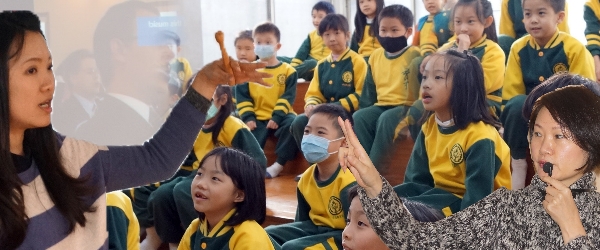
After the Beautiful Voices introduced a cappella and HanGuang Vocal Band in the guided tour and HanGuang Vocal Band attended our in-school music seminar, our students got really interested in a cappella, and many of them signed up for the for the ‘Learning Poetry in A Cappella’ competition on January 16.
Before the competition, the Cyberfair team organized what we learned from Teacher Allegro and members of HanGuang Vocal Band about a cappella and some simple voice percussion techniques demo videos and then made a PowerPoint for the music class teachers. They would then show the PowerPoint to students as supplementary materials. Are you ready for the class? Let’s go!
Event Profile
- Date:January 12 – 15, 2015
- Location:music classroom, Yu-Tsai elementary school
- Lesson:Learn about a cappella and voice percussion demo video
- Teachers:Ms. Yang and Ms. Lin
- Participating classes:Grades 2 - 6
Lesson detail
Music teachers will first play a short piece of a cappella music to arouse students’ curiosity, and then they will show our a cappella PowerPoint.
Origin of A CappellaTeachers will first introduce the origin of a cappella. Where and the way it was performed.
A cappella originated in Italy. It was a form of church music in Europe during the thirteenth and fourteenth century. Next, teachers will explain briefly a cappella as being a form of music without accompaniment.
|
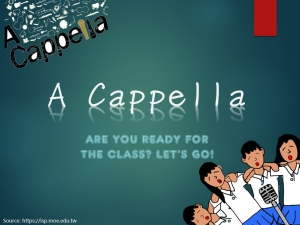 |
Contemporary A Cappella Contemporary A Cappella is still without accompanying instrument. However, beatbox is now added to make the music more diverse. Teachers will also introduce Teacher Allegro, who brought a cappella into Taiwan. |
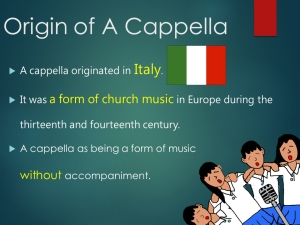 |
A Cappella Vocal PartsA cappella bands nowadays are often consisted of 3 to 10 people. The vocal parts are: Soprano, Alto, Tenor, Baritone, Bass, and Voice Percussion. Vocal parts will vary depending on the need of the band. |
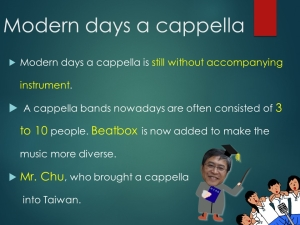 |
Basic chorus concepts
Teachers will use the chord in C major to teach basic chorus concepts.
Ms. Lin suggested skipping the middle and lower grade classes since they are still too young to grasp the concept. |
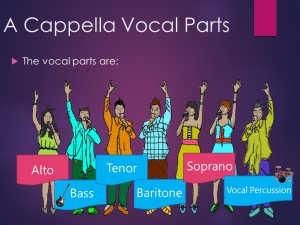 |
Basic chorus concepts (mix vocal parts)Every vocal part has its own pitch according to soprano, alto, tenor, baritone, and bass. After the parts are mixed together, the melody will differ. In the end, teachers will play all parts together for the class to hear what it is like mixing them all together. |
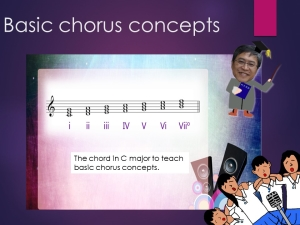 |
Basic chorus concept (same vocal parts)According to vocal parts, soprano will sing with tenor, alto with sing with bass. After harmony, since the melody will only differ slightly, this is called singing by same vocal parts. |
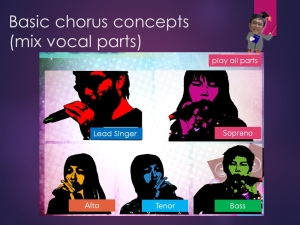 |
Finalizing a song, voice percussion
Finally, teachers will play a demo video by HanGuang Vocal Band to show how to turn our mouths into instruments. Introduce briefly how a song is made, how to make sounds of instruments, animals, or ambient sounds.
|
 |
 |
|
|
 |
Supplementary materials
| |
|
Ms. Yang adds:
Everyone can listen to ‘Gregorian Chant,’ which is a cappella music in its earliest form. It is a functional and mono-melodious song. Aside from being simple and slow in rhythm, a cappella is known as music without accompanying music, which is pure vocal singing. It is like reciting, similar to monks reciting scriptures in the east. However, there is still one difference in that there is no instrument involved in Gregorian Chant, so the tempo is even slower. When singing Gregorian Chant, since every one’s pitch differs, the reflected sound will sound like a harmony, and then it gradually transformed into music with various vocal parts. |
 |
 |
| |
|
Ms. Lin adds:
Normally, bands rely on instruments for accompaniment, like Taiwan’s famous rock band ‘Mayday’ uses drum, bass, and electric guitar. These instruments can give an absolute pitch so band members know where the right vocal range is. But it is not the case for an a cappella band. An a cappella band can only mimic instruments, so it can’t rely on instruments to pinpoint the exact vocal range. This is what makes a cappella unique and difficult. |
 |
 |
Class Highlights
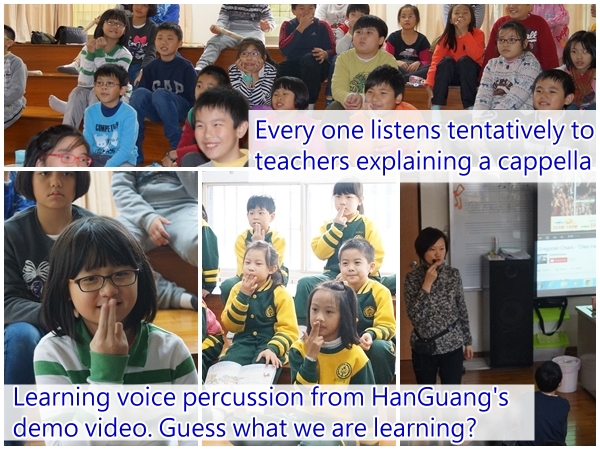
Source: the Beautiful Voices | Photos by the Beautiful Voices 
|
|












